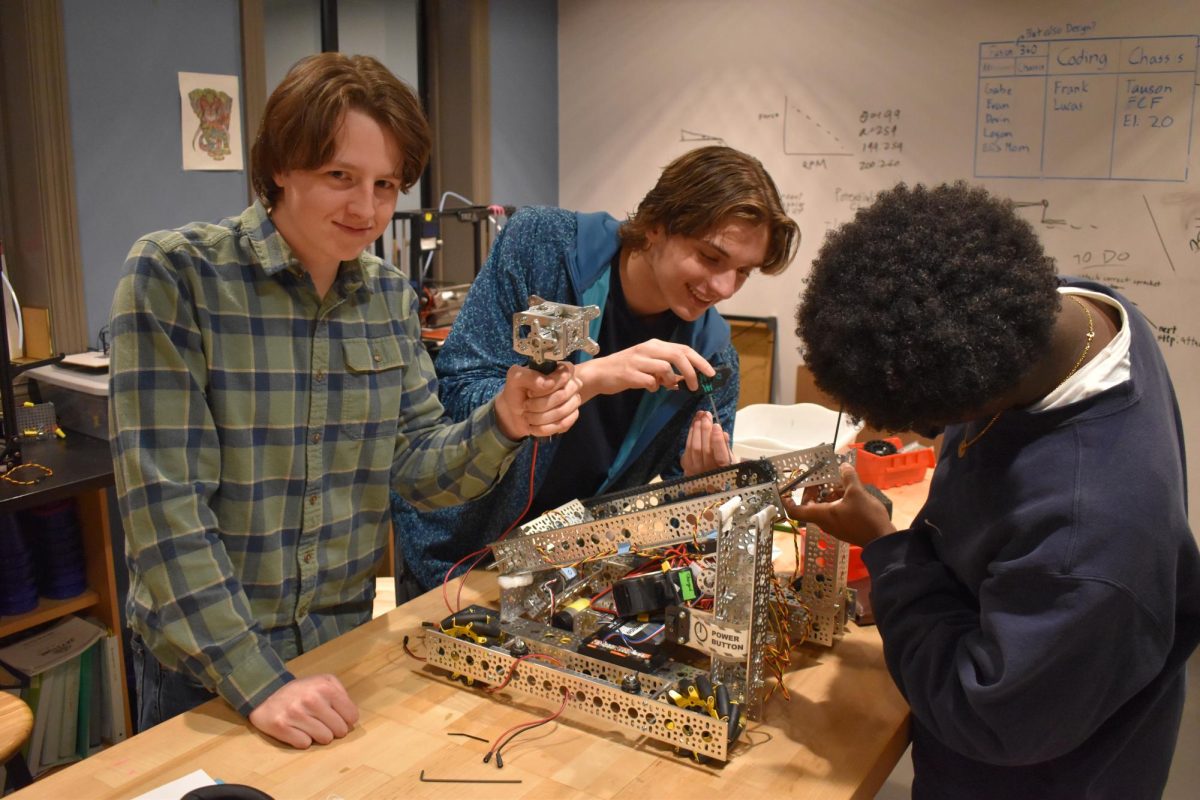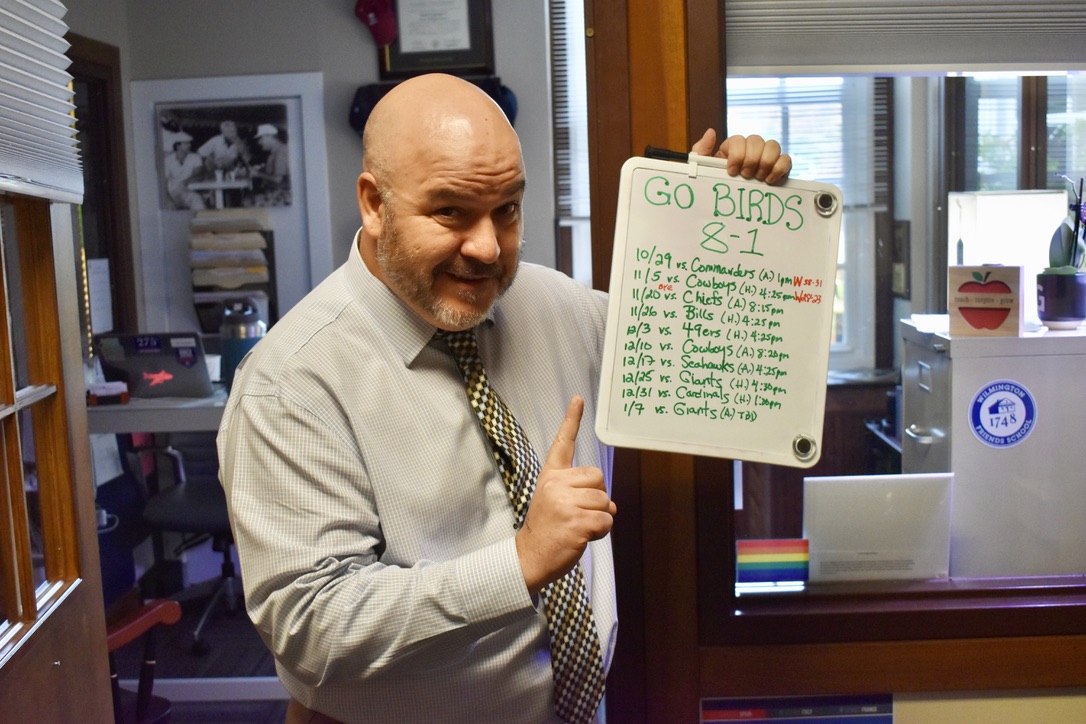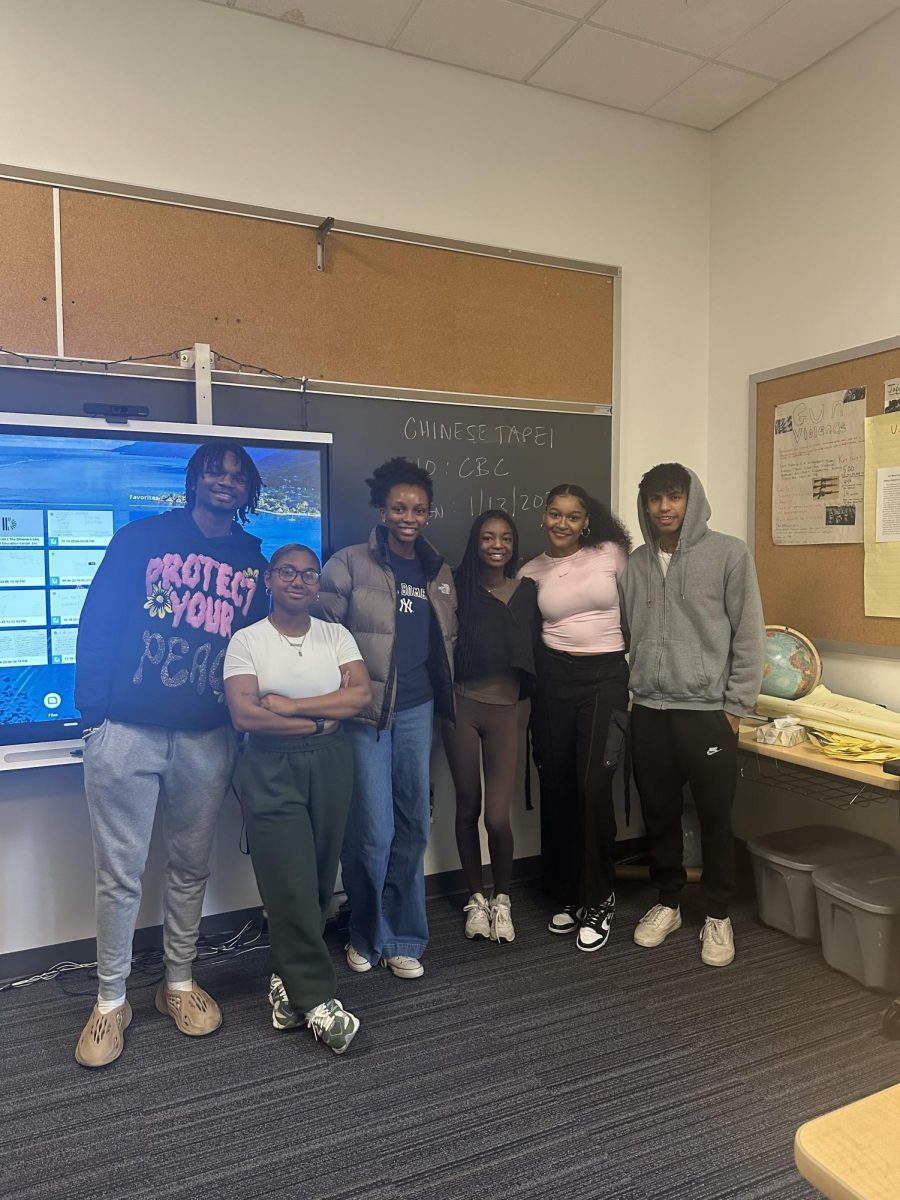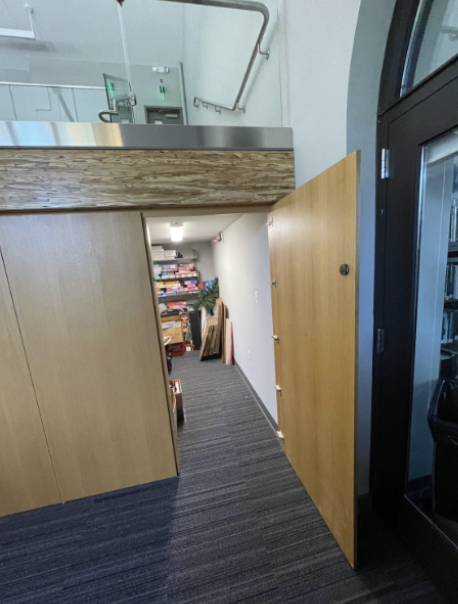Can We “Autocorrect” our Obsession With Technology?
Holiday Issue: Innovation and the Mind
Since the 2012-2013 school year, Wilmington Friends School has been a part of the 1:1 program in which each student is given a personal MacBook laptop. Along with this program, the 3-D printers, a theater with advanced light and sound capabilities, and the new upper school Design Lab. Computer Science teacher Jenks Whittenburg commented, “Technology here is an extremely helpful tool for my class especially, however that should be used productively, else they can consume too much time.” Tools such as the SMART Board improve learning by enlarging everything you can see on your computer. However, as technology advances, the addiction and fascination with it increases. In a recent study by The New York Times, it was revealed that high school students spend up to eight hours per day staring at a screen. Whether it be a large screen or mobile computing device, the hours seems to add up much quicker than most kids, and adults, would assume. Extra technology has affected high school students and their ability to learn.
Studies conducted by NPR and BBC suggest that excessive technology can alter our sleep patterns. The artificial light from a T.V., computer, or phone screen, affects melatonin production and can prevent one from reaching deep sleep. Sleep Foundation recommends spending 30 minutes away from a screen before going to sleep. Lack of sleep reduces academic and athletic productivity, which WFS students value. It impedes on attention spans and reaction times. A study conducted by Microsoft confirmed that the average attention span dropped from 12 seconds to 8 seconds since 2000, later adding that 77% of people aged 18 to 24 responded “yes” when asked, “When nothing is occupying my attention, the first thing I do is reach for my phone,”. Joslyn Gardner ’16 responded to the issue, “Technology is a huge distraction because if I have the option to watch T.V. or be on my phone, I’m more susceptible to procrastination, and that affects grades.”
The increasing accessibility of technology encourages kids to spend too much of their free time glued to electronic devices and “social networking,” rather than staying active and making friends. Some students at WFS fear this might lead to anxiety in social situations. Jay Handwerk ’18 said, “it should be used with caution because too much technology enables people to hide behind screens to bully people, or it can slow the development of social skills and give kids an outlet that makes them antisocial.” A term coined “Facebook Depression” is becoming more and more common amongst high school teens, and is defined as “emotional disturbance that develops when preteens and teens spend a great deal of time on Facebook.” Internet bullying has become prevalent now that kids have continuous access to social networking sites. A study by Huffington Post stated that 39% of teens on social network have been cyberbullied in some way. Students at WFS also admit to being frequently distracted by the incessant fashion or technology advertisements that follow us no matter what website we visit.
This is not to say that technology is always a bad thing. Technology allows us to complete assignments with efficiency and creativity. Many people also credit technology for the ability to communicate with friends and family across long distances. With the help of technology here at WFS, last year’s 9th grade Peace and Social Justice corresponded with students in Sweden for several months. The advancement of medical technologies saves lives, by expediting cures and advanced research and discoveries. WFS students should of course be grateful for the laptops and tools they have access to at school everyday. However, the disturbing statistics regarding technology use among teenagers invite us to reconsider what forms of technology use are truly necessary and beneficial.
























